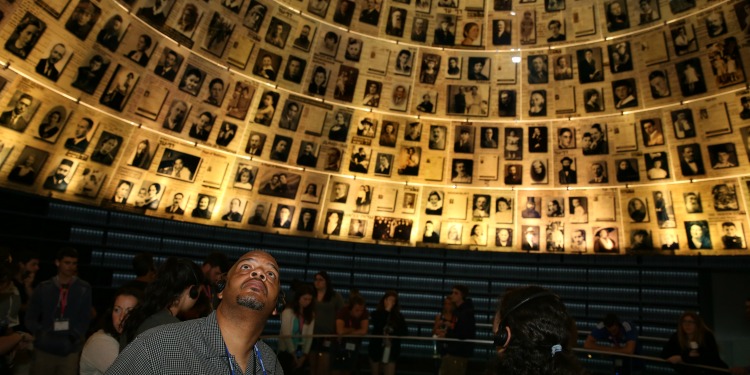For a Future Generation
The Fellowship | May 14, 2018

This week as The Fellowship‘s tour of Israel goes on, a writer from our Chicago office who is on the tour will be telling us about the places and people he experiences in the Holy Land. Here is his first story.
“Let this be written for a future generation,
that a people not yet created may praise the LORD:
‘The LORD looked down from his sanctuary on high,
from heaven he viewed the earth,
to hear the groans of the prisoners
and release those condemned to death.’
So the name of the LORD will be declared in Zion
and his praise in Jerusalem.” –Psalm 102:18-21
As our first day of the Fellowship Tour of Israel began, I had to wonder why this trip to the Holy Land by a group of Christians from America would begin at Yad Vashem, Israel’s official Holocaust memorial. After all, we were surrounded by biblical history, and Yad Vashem – as important as it is – tells a tragic story of the Jewish people in modern times.
Well, I needn’t have wondered. The psalmist answered this wanderer’s wonderings.
The countless biblical and historic places in the Holy Land that I’m going to visit – from the Sea of Galilee to Bethlehem, from the Mount of Olives to the Western Wall – will bring to life the Bible stories I’ve known since Sunday school. But it is Yad Vashem that tells the story of how and why the modern state of Israel was born – of why Zion was reborn.
Yad Vashem sits atop Mount Herzl, which it shares with Israel’s military cemetery. It’s fitting that it is a hill of memorials, both for those who lost their lives before modern Israel’s founding and those who gave their lives to ensure her existence. The building itself is a long cement triangle lit from above by skylights, its shape representing the bottom half of the Jewish Star of David, representing half of the world’s Jewry that perished during the Holocaust.
Our guide at Yad Vashem was a woman named Muriel whose parents both survived the Holocaust. Muriel’s father was interred in various Nazi labor camps simply because of his faith, while her mother, a Czech Jew who is still alive at the age of 95, was sent to Auschwitz. Because of her ties to this dark chapter in history, Muriel has decided to tell the story to a “future generation.” And tell it she did.
Muriel told us the story of the Holocaust – from its beginnings to its discovery by the world at war’s end – as she took us through the building’s exhibits. We began by learning of prewar Jewish life, both of cosmopolitan, secular Jews in Europe’s cities, as well as more religious and rural Jews in the villages and on the farms of Eastern Europe.
Muriel explained how the Nazi regime began spreading anti-Semitism through propaganda, showing the Jewish people as ugly and “other,” as people to distrust and hate. This hatred grew into violence – broken glass, looted shops, and shattered lives. We saw the evidence of this progression, from relics of what Jewish homes looked like before the violence began, to many – too many – yellow stars that the Jews were forced to wear to identify themselves as Jews. But the violence didn’t end there. It only grew worse.
Throughout the halls of Yad Vashem we saw artifacts of the Holocaust as the situation worsened: Stolen family heirlooms. Warped railroad tracks that carried Jews to their deaths. Cans of Zyklon-B gas used to poison millions of Jews. A steel truck chassis on which the Nazis burned these Jewish bodies in hopes of hiding their crimes.
A particularly poignant memento for me was a child’s toy, a handmade doll. Its owner, a little girl whose family was fleeing the oncoming Nazis, rushed back into their home to save the doll “because a mother doesn’t leave a little girl.”
And then there were the photographs, the pictures of corpses, and of people who looked like corpses. As we left the museum proper, we encountered the children’s memorial, remembering the 1.5 million Jewish children who were murdered during the Holocaust, a generation that would never be able to create new generations. Children who would never become adults. Who would never be able to tell their stories.
But it is those children’s stories, and the stories of 6 million people murdered in the Holocaust, that Yad Vashem tells “for a future generation.” And it is that “future generation” for whom Israel was reborn in 1948. It stands today, acting as a sanctuary for God’s people.
Read other posts about the tour, including visits to the Israel Museum and Yad LaKashish.
